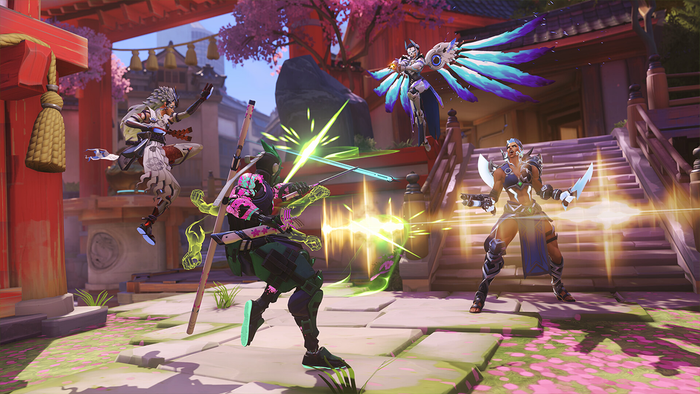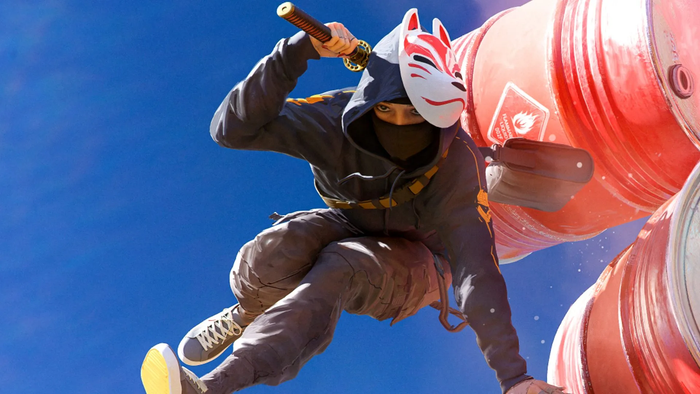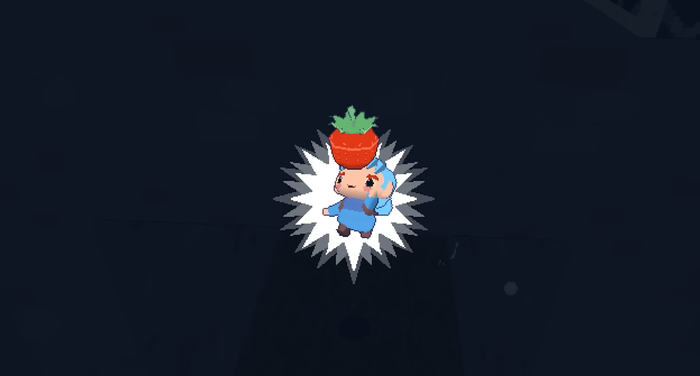Crowdfunding has placed game developers closer to their players, and offered more creative freedom. But new challenges await -- particularly concerning budgeting.

In recent years, crowdfunding has become a serious option for game developers -- and a welcome alternative for those long constrained by traditional publishing and funding models. What, all wondered, could game creators do if they were allowed a closer relationship with their players, liberated from the interference of suits bearing sheaves of market research and unrealistic milestones? Crowdfunding came along, and at first seemed to be the magic solution that put game creators in a closer relationship with their players, at the same time freeing developers of publisher control, supposedly granting them full creative freedom. But as reality sinks in, developers are realizing that crowdfunding presents a whole new set of challenges, particularly with budget management.
When "finished" games need more money
Publishers may keep games on time and on budget, but that might often mean that games end up being shipped less than finished, or entire studios punished when sales figures fail to meet calculated targets. That was the argument American McGee made to Kotaku when asked why his studio, Spicy Horse, used Kickstarter to successfully raise an additional $200,000 to extend the development of its action-RPG Akaniero. Although McGee said the game was complete on time and on budget, the team thought it could benefit from some further development and additional features. Seeking funding for an additional development cycle via Kickstarter was a way to see whether fans wanted them, he explained. A studio rep now tells Gamasutra Akaneiro is out and playable, as the team works on adding the features it promised in the Kickstarter. That didn't stop a lot of those following from being slightly confused, though: Why did a "finished" game need more money? In fact, after sharing in the inital wave of enthusiasm for Kickstarter, a lot of backers in the video game community are finding themselves frequently confused. Rock Paper Shogun published this list of updates on high-profile game Kickstarters at the end of last year, noting how few had actually met their target dates or were providing transparent updates at all -- and there are quite a few games on this list about which relatively-little update information is available even more than half a year later. Uncertainty about the obligation of creators and the role of fans persists in the Kickstarter age. Peter Molyneux's 22cans raised over $800,000 to fund Godus, and at the time there was grousing that a man wealthy enough to start his own studio ought to take some financial risks on his own games -- never mind that none would object to 22cans forming a relationship with a traditional publisher on the basis of a founder's personal finances. More grousing when in addition to crowdfunding the company also signed a deal with mobile publishing giant DeNA -- plenty of backers presume their contribution is a pre-order, but what if the project they funded becomes a free-to-play game? 22cans seemed to struggle with communicating with its backers around that publishing partnership, and again surprised them with the news that Godus' ruling deity would be Bryan Henderson, the winner of 22cans' Curiosity cube-tapping "experiment". Of course 22cans would not let a young kid have meaningful control over its game design (would it?), but the relative unlikelihood of Henderson being allowed to take over Molyneux's job wholesale didn't stop some Godus backers from feeling unsure and disgruntled about it all, if social media was any indication.
Double Fine's double dip
Double Fine's Broken Age is the highest-profile example of games on Kickstarter -- and now the most recent, most visible example of how challenging it really is to wrangle massive budgets, scope, communication and the expectations of fans in the crowdfunding age. Tim Schafer's beloved team asked for $400,000 to make a small game -- and got over $3 million. Probably even richer in goodwill than in money, Double Fine went on to successfully Kickstart a second project, Massive Chalice, to the tune of more than $1 million before the first project had shipped. Broken Age had begun to unspool some footage to its backers, and many fans thought it wouldn't be long before they'd get to play something. Late last week, though, Schafer explained the scope of the game had been greatly amplified to match the unexpected windfall the studio had received from its fan-funders -- such that the game will now have to be split into two parts, with the first one hitting Steam Early Access in January 2014. Hopefully the returns from that sale will be enough to sustain completion of the game's second half. It's not such an uncommon occurrence, as studios often (if not regularly) have to ask their publisher for more time and more money. Some backers and industry-watchers expect that, and others don't. In any case, the conversation about Double Fine -- it set the bar for Kickstarter plentitude and then had to ask for an adjustment of expectations -- illustrates how unexpectedly complicated a proposition letting your fans be your funders, your publishers and your community all at once can be. Subset Games' FTL: Faster than Light raised $200,000 when it asked for $10,000 in April 2012. Not only did it successfully deliver as promised to its backers, but it's earned wide acclaim even outside that initial community, winning Excellence in Design at the 2013 Independent Games Festival as well as the Audience Award. It's one of the biggest example of an end-to-end success story for indie game developers on Kickstarter.
FTL's ramen-fueled budget management
The game was well into development by the time co-creators Matthew Davis and Justin Ma decided to take to Kickstarter. "We'd spent the last year living off savings while making FTL, and those savings were running dry," Davis tells Gamasutra. "The Kickstarter funding was just to finish off the development, as opposed to funding the entirety of production, so it was fairly simple to compute what we needed." The pair tabulated general business costs, including legal and license fees, payment to their sound designer, and cost of living til the estimated production end, and came up with $10,000. But when FTL raised exponentially more funds than it had asked for, rather than ask for more time to increase the scope, Davis said the priority was keeping true to the projected schedule. "We had to come up with a way to budget that extra funding while not delaying the game," he explains. "We were lucky that Ben Prunty was available to start working nearly full time to expand the music and sound design. And we were lucky that Tom Jubert, our writer, found us and was able to add a novel’s worth of text events we would've never had time to write," Davis continues. "That extra workforce had very little effect on our scheduling as they could do their tasks without it interrupting or delaying ours, but it let us flesh out the game and really take advantage of the higher budget." Staying on budget is probably somewhat easier with a small team working from home with contractors comprising the only expense outside cost of living (versus a studio with frequent unexpected costs), Davis reasons. "Delays just mean eating more ramen instead of having to worry about firing people."
Be careful with those physical rewards for backers
Carefully avoiding physical rewards was important to staying on budget and on time, though: "The cost of creating and distributing rewards has the potential to destroy a budget." Davis has previously been, in his own words, a "low-level programmer at a large studio", so feels he doesn't have much experience with traditional development. But one striking difference, for him, between being "inside" and working on Kickstarter is that "it all takes place in the public eye. You have potentially thousands of backers along with the media and the rest of the community staring at you to see what you'll do," he notes. "They know exactly how much money you received, and then they form their own expectations for what sort of game that will make and how long it should take." One of the most frustrating elements of the often-uneasy relationship between developers, players and the press is the hard limit on process transparency -- the media is very rarely allowed to access and share the elements of game creation that don't go according to plans. The bigger a publisher is, the less likely it is anyone will ever know about a feature that got cut, or the time the project almost got cancelled, or the amount of money needed to complete it. Perhaps if the average person interested in backing and buying games understood more about the many-headed beast that is game creation, the Kickstarter relationship would be easier. Or perhaps publishers had the right idea about guarding the process and insulating creators from the constant communication. The public process of Kickstarter, the required transparency on every financial decision "does make an already-difficult job more stressful," suggests Davis. Though $200K isn't $3 million, in a lot of ways the experience of receiving exponentially more funding than requested may present a similar challenge for Double Fine as it did for Subset. "We didn't have a plan in place for it. Everyone has different expectations for you when something like that happens," Davis says. "Some backers think that with all that extra money, you should definitely be able to release on time. Others expect a proportionately larger project and delays. It’s very difficult to straddle such dramatically different expectations."
Changing your vision...because you have more money
Being highly over-funded may not be the windfall it looks like from the outside. It's enough to make Davis wonder if Kickstarter shouldn't prohibit overfunding. "It's very strange to put forward a strong vision for something you want to create, and then be told it must change because you have more money," he says. "Sometimes (such as for FTL) the scope is designed based on what makes the best game, and not what can be afforded. The possibility of overfunding could encourage developers to set the bar low, and then design the game around what they receive instead of requesting the amount they need to make the project they want." Independent games creator Deirdra Kiai has twice successfully crowdfunded and delivered games: they used Kickstarter in 2009 to fund storytelling-centric Life Flashes By, and Indiegogo in 2012 to make stop-motion animated detective adventure Dominique Pamplemousse In: It's All Over Once The Fat Lady Sings!. Kiai describes their first Kickstarter foray as mainly motivated by the desire to pay artists and gain experience in fundraising for solo work. Kickstarter was still a new frontier in 2009 -- "Most games projects that were being successfully funded at the time had targets of only $1000-2000, so I set my budget around there," Kiai explains. They ended up losing money on the project, but gained a positive learning experience ("one thing I learned was that setting aside time and money for backer rewards can be quite an expense in itself," Kiai says). For the second game, Dominique Pamplemousse, "I actually had a proper budget, and set my funding target to be about what I would charge to do the same amount of work as a freelance contractor. By then, it was 2012 and the internet as a whole was more familiar with crowdfunding as a way to support games projects, which made it a lot easier to seek a higher funding amount," says Kiai. "Also, I had a demo complete and available for potential backers to play, which helped a lot with setting and managing expectations, both in terms of the work I felt I still had left to complete, and what backers could expect the final product to be like." Kiai says they completed Dominique Pamplemousse in about the amount of time expected, even though another work contract and the challenges of App Store submission delayed things somewhat. "What I feel I did better this time around was release the game before sending out backer rewards -- there are still a couple sets of rewards that I haven't finished yet, even though the game has been out since April," says Kiai. "I feel this works better than doing it the other way around, as the rewards often feel more like 'special edition' extras that don't mean as much if you haven't played the actual game."
Managing backer rewards
Delivering the game on time and on budget is enough of a challenge, but managing the backer rewards process is an entirely different creature. Subset Games found it best to avoid physical rewards, while Kiai finds it important to deliver the game first, then the rewards. Liam Burke raised more than double his $3000 goal for pen-and-paper roleplaying game Dog Eat Dog, but found delivering backer rewards that would go with a physical game was a little trickier. "Printing custom poker chips was significantly pricier than I realized, which brought my margin down on all the backer levels that contained them," he notes. "I also had some trouble balancing incoming funds with the lead time necessary to use them. For example, I had wanted to put more art into the game if I raised the necessary funds, but by the time I could be sure I'd have enough money, there wasn't enough time to find a reliable artist and get the work done before I had to have the book ready. I'd also very strongly emphasize the need to consider shipping costs, especially overseas." When considering Kickstarter versus traditional models, Kiai says they've benefited from thinking of crowdfunding as "a freelance contract you get paid up front for, and a marketing tool... I think the difference when it comes to conventional game development -- if there is such a thing anymore -- is that a lot of stuff happens at the beginning rather than closer to the end. I think it helps with scheduling and budgeting to start a little further along than right at the beginning.
Over-funding's double-edged sword
Both Kiai and Subset used Kickstarter to seek funding on a game that had already been developed on their own time and initiative to some extent, which suggests being underway on a project makes it easier to allocate time and funds if successfully raised via Kickstarter. So does having development experience, particularly when it comes to managing feature creep, Kiai suggests. "Since I work alone, I manage a team of one... but the more people you have on your team, the more you need a dedicated project manager," they add. Kiai also agrees with Subset that "being so popular you get overfunded" can be a double-edged sword. "I find that overfunded projects get their schedules and budgets all messed up because they think the project will grow linearly when in reality it winds up growing more exponentially," they say. It seems starting development on a game to better decide what it needs, then keeping it on schedule and not massively rethinking it even if more funds than expected come in, is a pragmatic strategy for Kickstarter games. But managing the relationship with the community -- which includes the considerable challenge of wrangling expectations and keeping backers informed -- is another significant challenge. "If you can attract people who understand that crowdfunding is not just a preorder, that you're not buying a game but supporting an artist's potential, and that there's a high risk that the game may not be everything you thought it would be, but it's worth it because it's trying something new and different in a medium that's largely controlled by a hit-driven, risk-averse industry, then that makes a world of a difference," says Kiai. "A community that cheers you on and has your back makes you much more productive than a community that doesn't, plain and simple." "I think even the bigger-name game companies who put their projects up on Kickstarter can benefit from an attitude of humility," Kiai advises. "In my work as a professional game developer, I'd always felt a certain separation between "gamers" and "devs", which never sat too well with me. I don't like the idea of talking down to my audience, or even considering myself as separate from it. It's not like we're wizards and they're muggles, or anything like that. We're all people, and we're all in this together!" "By far the most important thing is to be honest and upfront with the backers as soon as possible," agrees Subset's Davis. "They really are on your side, they were there ready to trust you with their money and want you to succeed. It's amazing how supportive they can be as a community. So listening to what they expect and desire should be the priority."
Kickstarter is far from a magic solution
Still, having players as funders and collaborators is "absolutely terrifying", says Davis. "The players are already the most important group during development, since they're the ones you want to enjoy the game. When they also become your funders and constant observers, it's indescribably stressful. But as I said above, it's important to remember that they are on your side. Listen to them and their concerns. They want the game to succeed more than anyone else does." Perhaps Kickstarter is simply more ideal for smaller games with clear constraints and an intimate relationship with player bases. "No matter how difficult cuts are, they can result in a superior product," Davis says. "Bigger is not always better, and working within tight constraints can fuel creativity." Dog Eat Dog creator Burke says that when fundraising for a smaller project, it's more about networking with the right people and within the right communities than gathering hordes of anonymous internet donors. "The reality is that running a Kickstarter is like being a community manager for a community that doesn't know it exists yet. In that sense it's very much a full-time job," he says. Kickstarter may yet offer a solution for developers wanting to create broad, expansive, even expensive visions via crowdfunding, but right now it's far from the magic solution to the stress and constraint of traditional publishing that many devs hoped it would be. If the lessons from successfully-delivered Kickstarter games are to stay on schedule no matter how much money is available, keep within scope and be unafraid to keep visions trim, then the best ways to launch a game via the service may not be that far off from the best practices of traditional publishing. For now it clearly offers a whole heap of additional challenges, too.
About the Author(s)
You May Also Like









